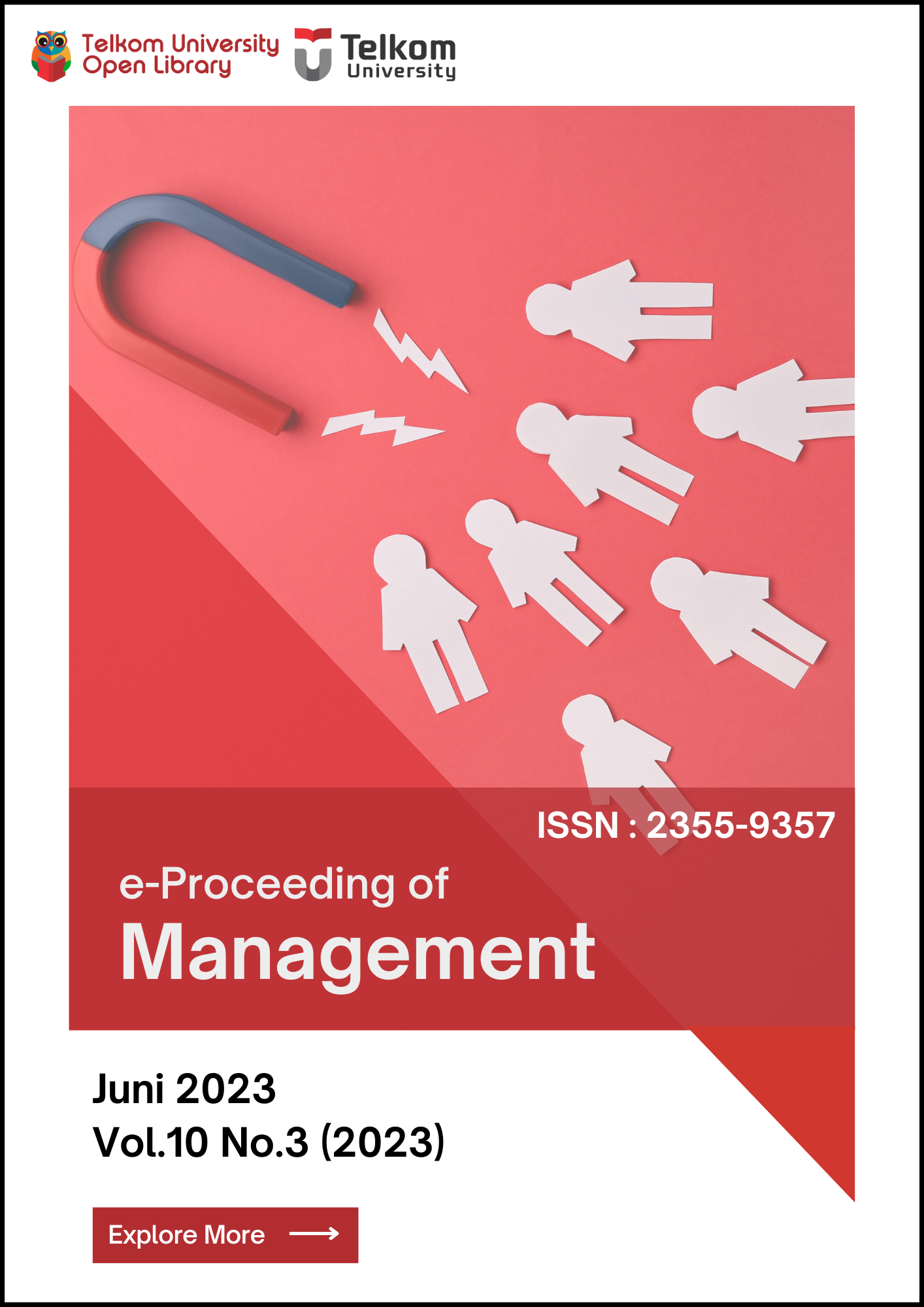The Influence Analysis Of Electronic Word Of Mouth On Purchase Intention Mediated By Brand Image On Lazada In Bandung City
Abstrak
The development of technology every year has increased very rapidly, in this increasingly modern era, mostpeople in choosing or buying a product are influenced by technological sophistication. Over time, the business
world is an example of this technological development, the emergence of online commerce or e-commerce.
Lazada is an online store that is less popular than Shopee which are the most popular e-commerce platforms in
Indonesia. Due to the large number of declines in Lazada, the problem to be discussed is Electronic Word of
Mouth which affects Purchase Intention mediated by Brand Image. This study using quantitative approach with
descriptive analysis. The population are Lazada consumers in the city of Bandung. The sampling technique used
is non-probability sampling with a total 400 respondents and data collection in this study was carried out by
distributing online questionnaires via Google form, using a Likert scale. Data analysis used Structural Equation
Model Partial Least Square (SEM-PLS) with SmartPLS 3.0 software. Based on the results of the study, the
Electronic Word of Mouth variable influences Purchases Intention. Electronic Word of Mouth influences Brand
Image. So it can be concluded that Electronic Word of Mouth has an influence on Purchase Intention through
Brand Image.
Keywords-electronic word of mouth, purchase intention, brand image
Referensi
Alrwashdeh, M., Emeagwali, O. L., & Aljuhmani, H. Y. (2019). The effect of electronic word of mouth
communication on purchase intention and brand image: An applicant smartphone brands in North
Cyprus. Management Science Letters, 505–518. https://doi.org/10.5267/j.msl.2019.1.011
(APJII), A. P. J. I. I. (2020). Data Pengguna Internet di Indonesia Pada Quartal 2
Databoks.Katadata.https://databoks.katadata.co.id/datapublish/2020/11/11/jumlah-penggunainternet-
di-indonesia-capai-1967-juta
Firmansyah, M., Anang. (2020). Pengantar Marketing (Tim Qiara Media (Ed.)).CV. Penerbit Qiara Media.
Ghozali, I. (2014). Structural Equation Modeling, Metode Alternatif Dengan PartialLeast Square (PLS),
Dilengkapi Software Smartpls 3.0, Xlstat 2014, danWarpPLS 4.0 Edisi 4. Badan Penerbit Universitas
Diponegoro. Badan Penerbit Universitas Diponegoro.
Indrawati. (2015). Metode Penelitian Manajemen dan Bisnis Konvergensi. Bandung : Teknologi Komunikasi dan
Informasi, Aditama.
Kotler, K.(2009). Manajemen Pemasaran 1.Edisi ketiga belas. Jakarta: Erlangga
Kotler, P. dan Amstrong, G. (2016). Principles of Marketing. New Jersey : Preantice Hall.
Kotler Philip, dan K. L. K. (2016). Marketing Management. Global Edition, 15 Edition. Essex, England : Pearson
Education
Nuseir, M. T. (2019). The impact of electronic word of mouth (e-WOM) on the online purchase intention of
consumers in the Islamic countries – a case of (UAE). Journal of Islamic Marketing, 10(3), 759–767.
https://doi.org/10.1108/JIMA-03-2018-0059
Priansa, D.J. (2017). Perilaku Konsumen Dalam Persaingan Bisnis Kontemporer. Bandung: Alfabeta
Sarwono, J. dan Narimawati, U. (2015). Membuat Skripsi, Tesis dan Disertasi dengan Partial Least Square SEM
(PLS-SEM). Yogyakarta: Penerbit ANDI
Schiffman L G.Dan Kanuk, L, L. (2007). Consumer Behavior (Tenth Edition). Tsinghua University Press. China.
Sunyoto, D. (2015). Perilaku Konsumen dan Pemasaran. Yogyakarta: CAPS
Tjiptono, F. (2005). Brand Management & Strategy. Yogyakarta: Andi
Tjiptono, F. (2019). Pemasaran Jasa: Prinsip, Penerapan dan Penelitian. Yogyakarta: ANDI.
Widjojo (2017). Metodologi Penelitian. PT. RajaGrafindo Persada






